This meal is our riff on the classic Mughal cooking of India, (see our Tandoori Turkey recipe), which reflects a love for simmered creams, yogurt marinades and intensely aromatic spices in meals like this gravy based Sabzi Kurma, which traditionally uses just vegetables.
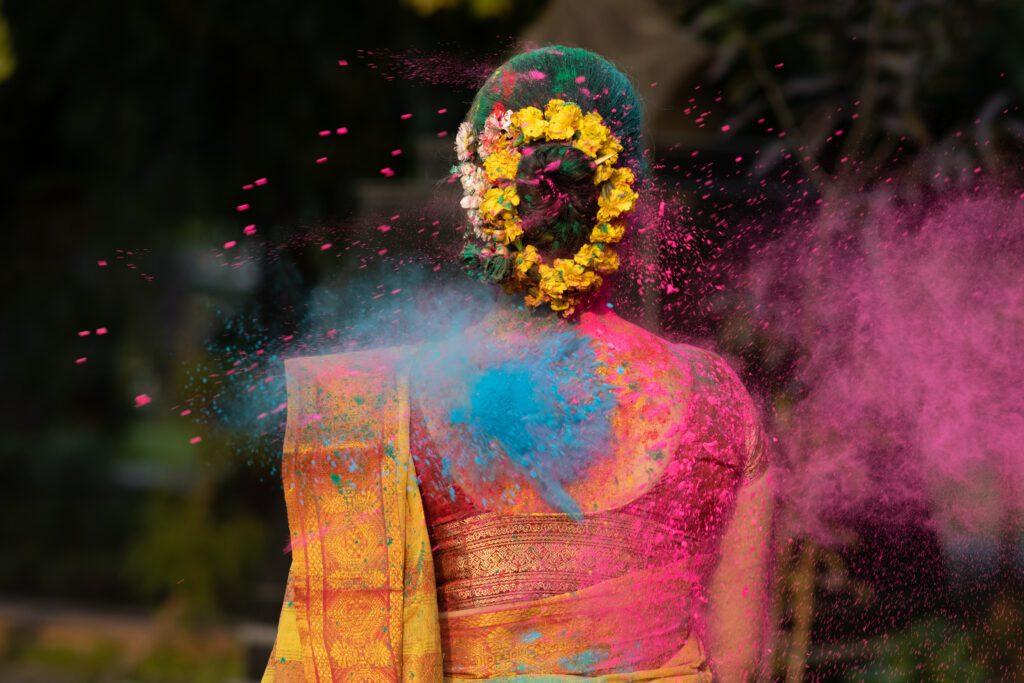
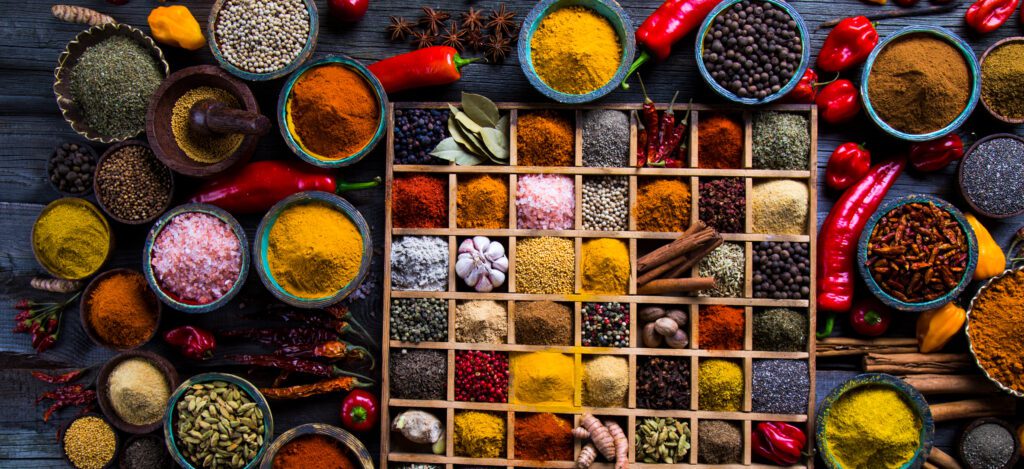
The word “curry” has a certain irony to it and doesn’t even exist in any language in India, out of twenty two different languages. It’s strictly an English affectation in which they culturally homogenized the whole notion of Indian spices so thoroughly that today folks from India just shake their heads at the whole concept. It’s like walking into an American restaurant in any different region of our country and asking if they serve any American food. Every single region of India has very different food, different spices, different ingredients… and every single home in India has their own ground spices that are proudly passed from mother to daughter for generations, and kept secret, like any other family treasure.
And those unique blends of spices are utterly and completely different from the little jar of powder found in American supermarkets and labeled as “curry.” It is only generically and even accidentally similar to any actual family spice blends in India. Using the “curry” in that jar would be like giving an Italian chef a can of tomato paste and asking him to make a great pasta. He’d probably chase you around the kitchen with his carving knife.
The wonderful and authoritative Indian author Madhur Jaffrey said it well… “How can you take such a big country with so many states within it, with such different cuisines within it, where every town has specialties and special dishes—how can you take all that food from around India and call it all curry?”
One of the main reasons America was “discovered” in the strange way that it was is that Europeans were so desperate to find exotic and aromatic spices, like those found in this recipe, that they set sail across an ocean with maps which depicted regions teeming with monsters. Searching for the spices of the Indian subcontinent, they set sail on a largely unknown sea that somewhere on the horizon possibly fell off a flat world. It only takes one taste of a great feast from India to fully understand why they did so. The good life needs spice. Enjoy!
Ingredients
8 boneless skinless chicken thighs, free range, air chilled, cut into roughly 1 inch chunks and lightly salted
4 to 6 tomatoes, depending on size, roughly chopped (we use Campari in the winter, and Early Girl or Cherokee Purple when in season)
48 oz. of chicken broth (we boil the bones of a whole roasted chicken)
6 oz of unsalted butter (we use European style) or equal amounts of ghee or vegetable oil
6 to 8 carrots, depending on size, peeled and cut into thick slices
1/2 pound of French green beans, cut into 1 inch pieces
1/2 a pound of petite peas, fresh or frozen
2 pounds cauliflower, cut into roughly 1 inch cubes
4 medium potatoes, cut into roughly 1 inch cubes
4 to 6 bay leaves
4 whole dried red chillies
12 ounces coconut cream or 16 ounces coconut milk, first press (cream is much better than milk, which is simply watered down cream)
2 onions, chopped
4 cloves garlic, crushed (like most cooks in India, we make a ginger-garlic paste)
2 inches of fresh ginger, grated and then mashed in the mortar with the garlic
4 to 6 curry leaves, whole
1 large pinch saffron
Curry Powder
1 tablespoon garam masala
1 tablespoon cayenne powder (or more for some real heat, like the Madras cuisine from the south of India)
1 tablespoon turmeric powder (we grind our own from the hard root, but be careful, it can chip the plastic cover of the grinder from the inside, so try to break the root into smaller pieces first with a hammer or pestle)
4 inches cinnamon stick, broken into 1 inch sections
2 tablespoons cumin, ground
2 tablespoons black mustard seed, NOT ground
6 green cardamom, ground
4 cloves, ground
3 star anise, ground
2 teaspoons fenugreek, ground
2 teaspoons coriander, ground
2 to 3 teaspoons salt, to taste (we use 3)
2 teaspoons black pepper, to taste
Cooking
Dry roast (no oils) the cinnamon stick, cumin, cardamom, anise, fenugreek, coriander and cloves in a small pan on low heat till they are fragrant. Set aside and allow to cool. Once cooled completely, grind it all together, and then add the turmeric powder, garam masala, cayenne, salt, black pepper and black mustard seeds. These are your curry spices for this feast.
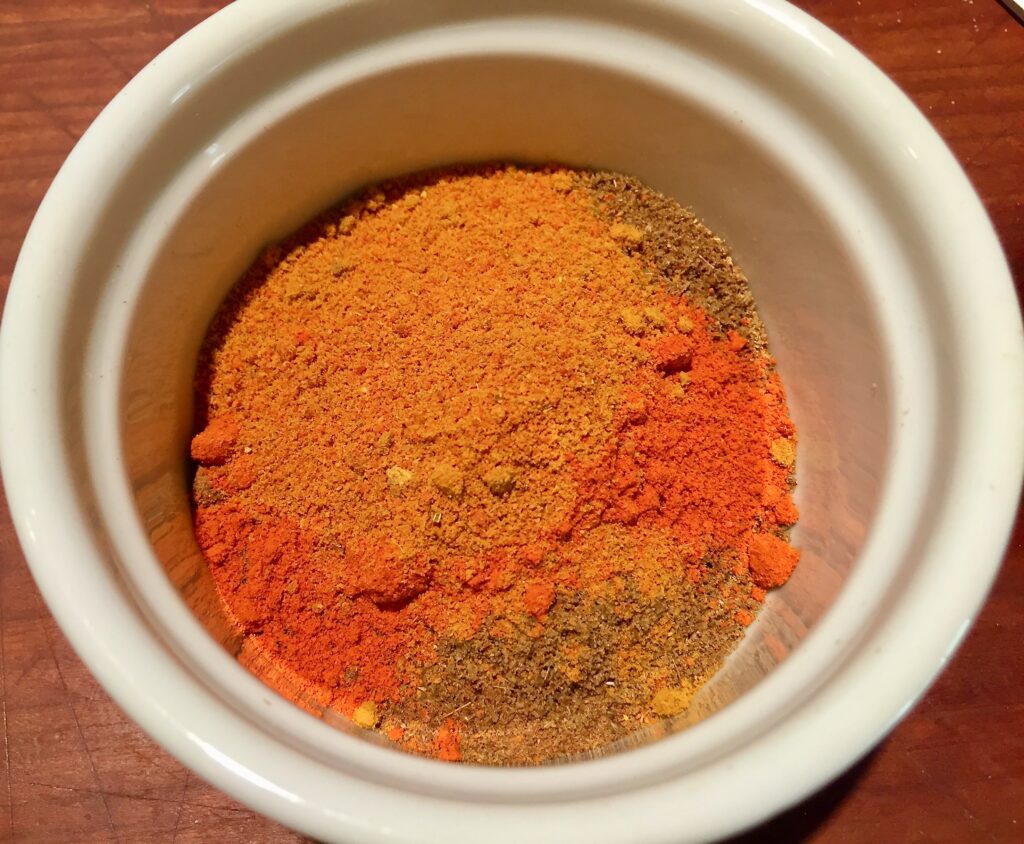
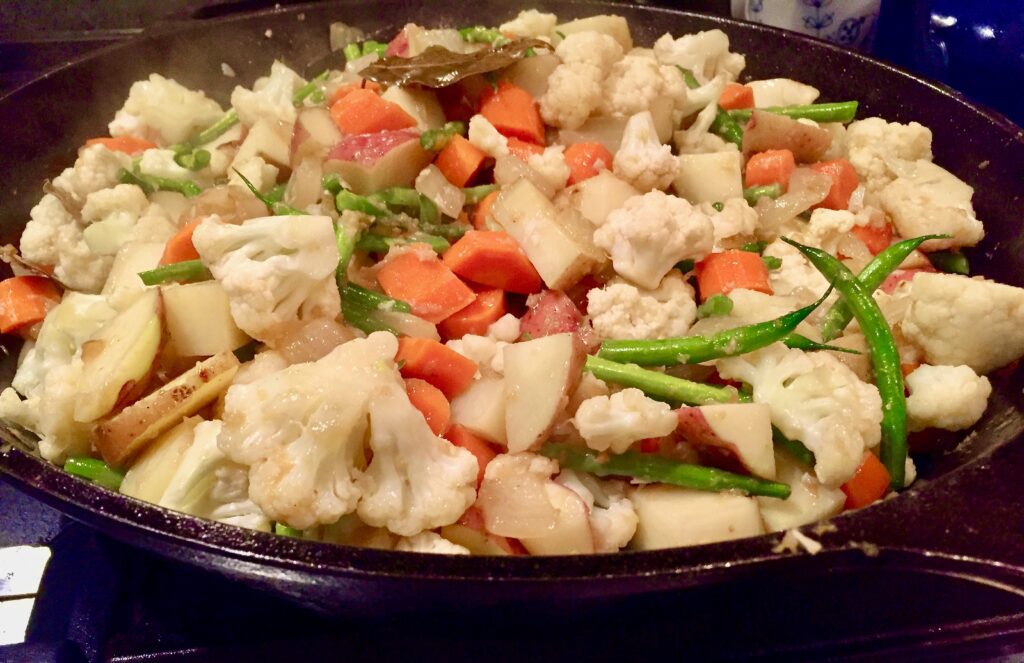
In a 14 inch pan, heat half the butter (or ghee) until sizzling and then add the bay leaves, curry leaves, and the whole dried red chilies, sauté until aromatic. Add the onion, sauté until opaque. Add the garlic/ginger paste and sauté until aromatic. Add the rest of the butter and the carrots, beans, cauliflower, potatoes and sauté for a few minutes until they first begin to soften. Once they are all coated with hot oils, add all the spices including the black pepper and salt, sauté until everything is hot, covered with spices and very aromatic.

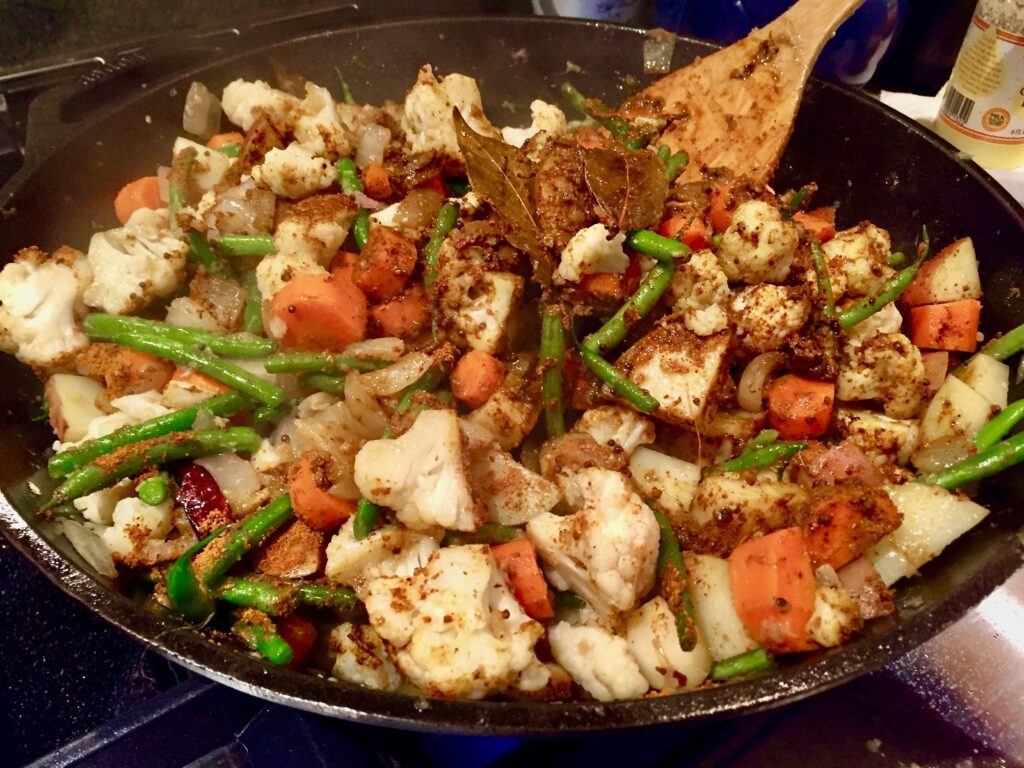
Place all the curried vegetables in a large stock pot, add the already heated chicken broth and simmer until half cooked but still al dente, about 5 minutes. Add the coconut cream, chicken and tomatoes, peas and saffron. Simmer on low heat until creamy and married, 15 to 20 minutes.
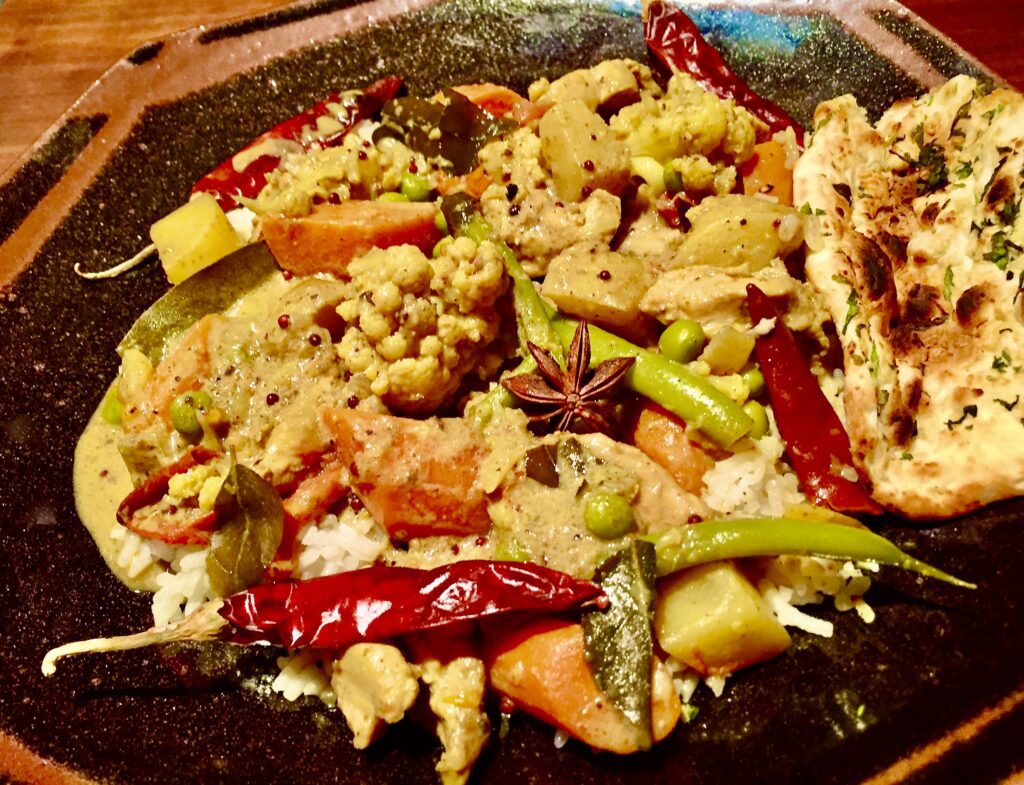
This is an authentic Indian feast for at least eight friends, family, loved ones or just strangers brought in hungry from the road. Everyone is welcome to spiciness.
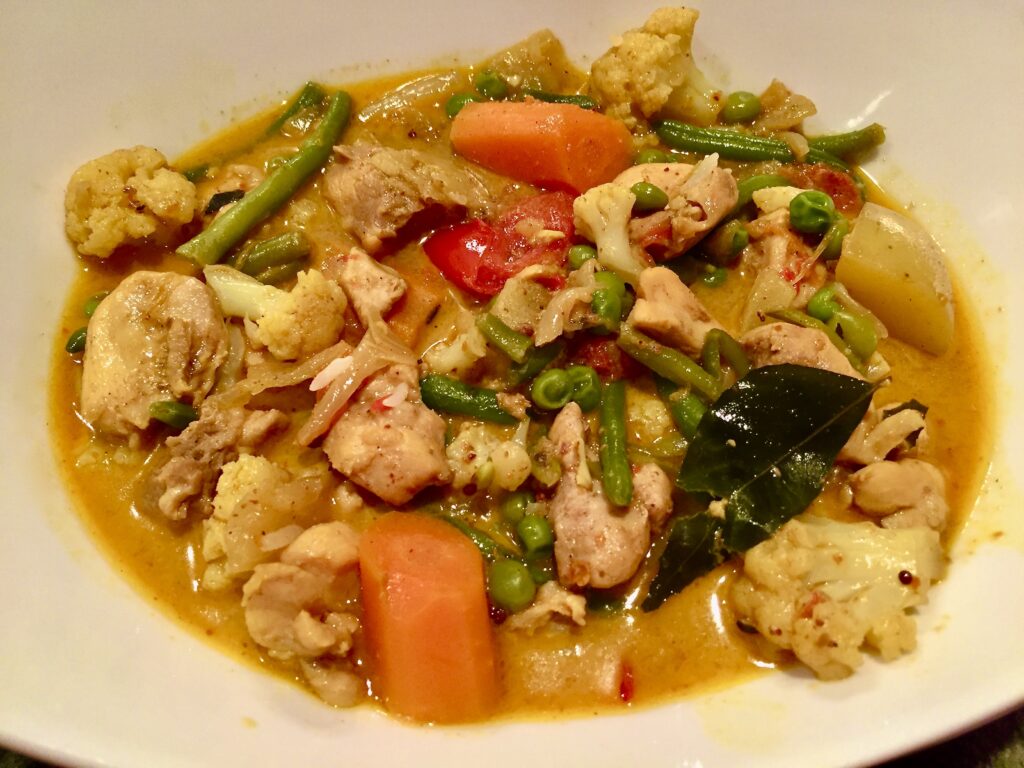
Serve with aromatic Basmati or Jasmine rice, chapati, garlic naan, chutney, dal, raita, yogurt, and rose water. All are blessings from India.
